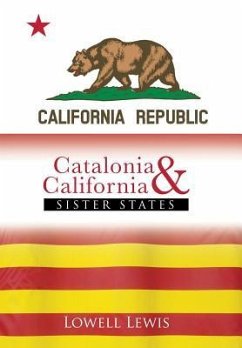
History of Catalonia
Versandkostenfrei!
Versandfertig in 6-10 Tagen
55,99 €
inkl. MwSt.

PAYBACK Punkte
28 °P sammeln!
The territory that now constitutes the autonomous community of Catalonia in Spain, and the adjoining Catalan region of France, was first settled during the Middle Palaeolithic. Like the rest of the Mediterranean coast of the Iberian Peninsula, it was colonized by Ancient Greeks and Carthaginians and participated in the pre-Roman Iberian culture. With the rest of Hispania, it was part of the Roman Empire, then came under Visigothic rule after Rome's collapse. The northernmost part of Catalonia was briefly occupied by the Moorish (Muslim-ruled) al-Andalus in the eighth century, but after the def...
The territory that now constitutes the autonomous community of Catalonia in Spain, and the adjoining Catalan region of France, was first settled during the Middle Palaeolithic. Like the rest of the Mediterranean coast of the Iberian Peninsula, it was colonized by Ancient Greeks and Carthaginians and participated in the pre-Roman Iberian culture. With the rest of Hispania, it was part of the Roman Empire, then came under Visigothic rule after Rome's collapse. The northernmost part of Catalonia was briefly occupied by the Moorish (Muslim-ruled) al-Andalus in the eighth century, but after the defeat of Emir Abdul Rahman Al Ghafiqiwas's troops at Tours in 732 local Visigoths regained autonomy, though they voluntarily made themselves tributary to the emerging Frankish kingdom, which gave the grouping of these local powers the generic name Marca Hispanica. Identifiably Catalan culture developed in the Middle Ages under the hegemony of the Counts of Barcelona. As part of the Crown of Aragon most historians would say the dominant part the Catalans became a maritime power, expanding by trade and conquest into Valencia, the Balearic Islands, and even Sardinia and Sicily.












